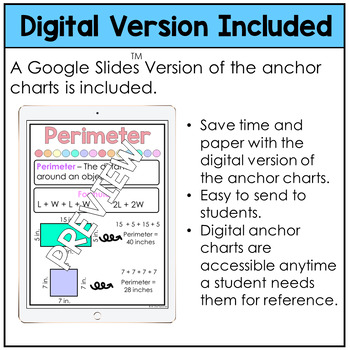4th Grade and 5th Grade Geometry and Measurement - Anchor Charts Bundle
- Zip
What educators are saying
Products in this Bundle (10)
showing 1-5 of 10 products
Also included in
- This is a set of 4th and 5th Grade Math Anchor Charts. These anchor charts can be posted on a classroom bulletin board or printed as mini-anchor charts for each individual student. An interactive version of each anchor chart is also included; this version can be used as a journal entry. These anchorPrice $95.00Original Price $141.75Save $46.75
Description
This is a Bundle of 4th and 5th Grade Geometry Skills Anchor Charts. These anchor charts can be posted on a classroom bulletin board or printed as mini-anchor charts for each individual student. An interactive version of each anchor chart is also included; this version can be used as a journal entry. These anchor charts are colorful, neatly organized, and contain vocabulary terms, definitions, examples, and strategies.
These anchor charts can be easily integrated into your lesson plans. The anchor charts can be used to introduce new concepts or can be used as a visual aid to review previously taught concepts.
What's Included?
- 24 Anchor Charts
- Set #1 - Angles (3 Anchor Charts)
- Set #2 - Area and Perimeter (2 Anchor Charts)
- Set #3 - Lines of Symmetry (2 Anchor Charts)
- Set #4 - Type of Lines (2 Anchor Charts)
- Set #5 - Units of Measurement (3 Anchor Charts)
- Set #6 - Classify Triangles (2 Anchor Charts)
- Set #7 - Classify Polygons (2 Anchor Charts)
- Set #8 - Convert Units of Measurement (3 Anchor Charts)
- Set #9 - Adjacent Angles (3 Anchor Charts)
- Set #10 - Volume (2 Anchor Charts)
- Full-Size Color Version of each anchor chart
- Mini-Size Color Version of each anchor chart
- Full-Size Blackline Version of each anchor chart
- Mini-Size Blackline Version of each anchor chart
- Google Slides™ Version of each anchor chart
- Interactive Version of each anchor chart
Follow My TPT Store
*Questions? Comments? Suggestions You can reach me at: theallstarteacher@gmail.com






